Silo cleaning in agriculture
Flat or mobile silos, tower silos, silo bags made from Trevira – there are various ways of storing fermented and dry fodder, other fodder components and liquid manure. If there is a lack of hygiene on the farm, contamination will result in reduced performance and health problems in the animals. To prevent this, thorough silo cleaning is required after each storage period.
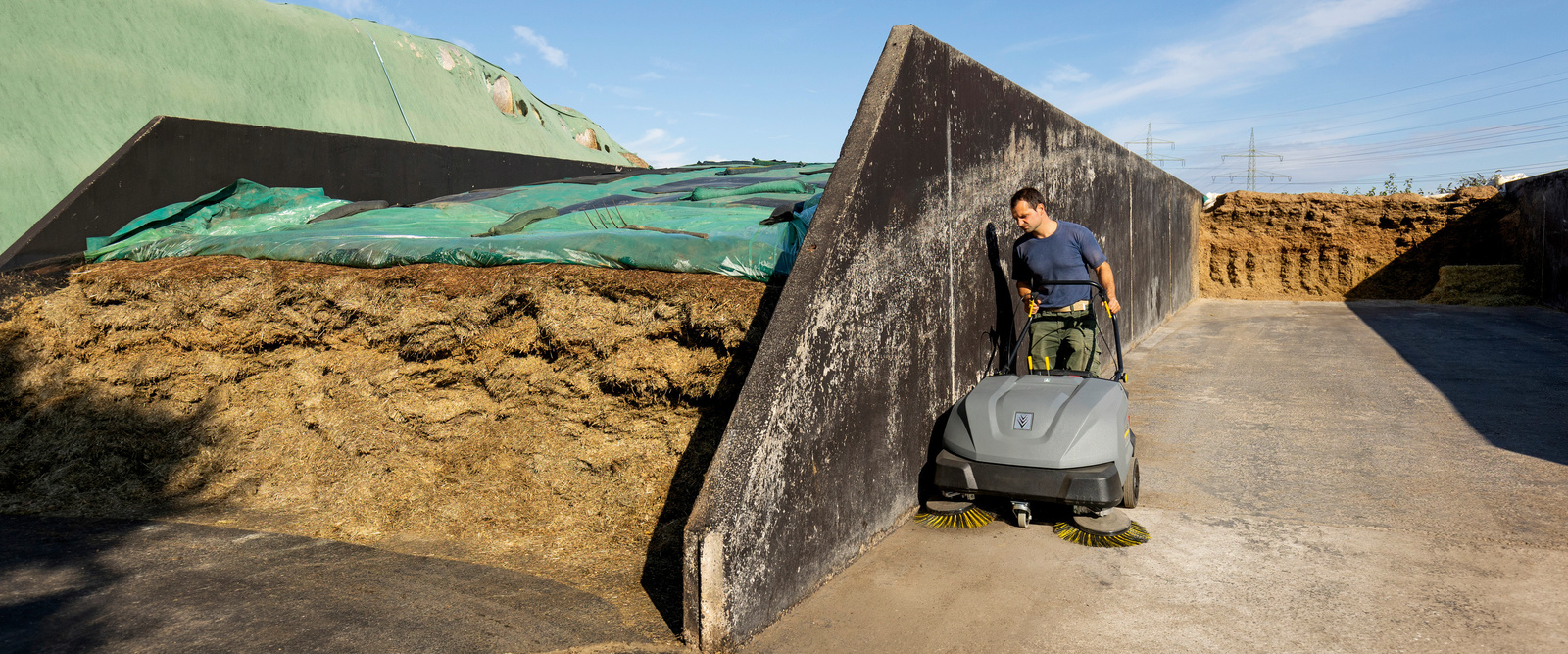
Why silo cleaning? Legal requirements and economic necessity
The immune system and the health of animals are supported by a stable intestinal flora. They need clean fermented feed and the lactic acid bacteria, which are very important for the intestinal flora. According to the applicable feed hygiene regulations, farmers who produce, process and store feed must comply with clear guidelines regarding cleanliness and hygiene. A control and cleaning of the feed silo in a fixed cycle is therefore just as mandatory as the documentation of the measures. However, not only the legal framework is a reason for farmers to regularly check cleanliness and hygiene in the feed cycle and to carry out the necessary cleaning work - it is also about economic success.
What causes poor hygiene in the feed circuit
If, for example, moisture penetrates into a silo bag with dry feed, the feed absorbs the moisture and fungus develops. If this is not noticed, spores can be detected in the feed, which can lead to health problems in the animals. If deposits from leftover feed and mold get into the feed in outdoor silos, there is a significant loss of performance for the animals. For example, sows may not go into heat, pregnancy and farrowing rates decrease, and the replacement rate increases. The contaminated feed can lead to diarrhoea, the lower feed intake means reduced weight gain in fattening, which prolongs the keeping period. The economic losses can be immense if the hygiene risk is not localized and eliminated. Consistent monitoring and regular silo cleaning ensure that such problems do not occur in the first place and that animal health is maintained.
Cleaning mobile or flat silos: high pressure, large amounts of water
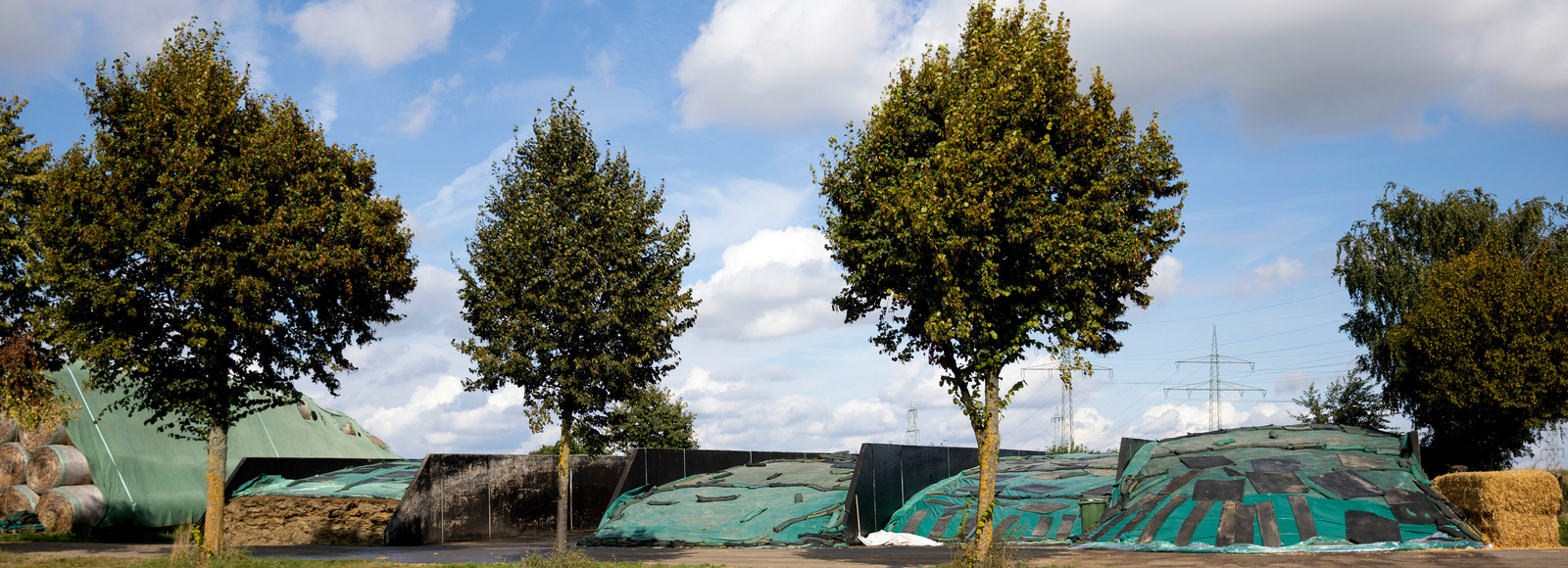
Mobile or flat silos are made of concrete and are either lined with tar or coated with bitumen silo paint. In this way, the floor and walls are protected against the aggressive effluent and the stress caused by machines. However, wind, weather and other external influences make the surfaces more porous over time, making it easier for food residue and dirt to settle - an ideal basis for germs and mold. After each emptying, the silo must be cleaned thoroughly so that newly stored feed is not spoiled.
A high-pressure cleaner is very well suited for this work, as it supplies a high pressure of up to 250 bar and large amounts of water of up to 2,500 liters and thus a high flushing capacity. This is the only way that stubborn dirt can be loosened by water power on the one hand and transported away on the other. A dirt blaster is a performance-enhancing accessory, i.e. a rotary nozzle that creates a moving omnidirectional jet. If it is a silo with high walls, telescopic lances help to reach all surfaces. With a working distance of around 40 centimetres, the walls are cleaned first, followed by the floor.
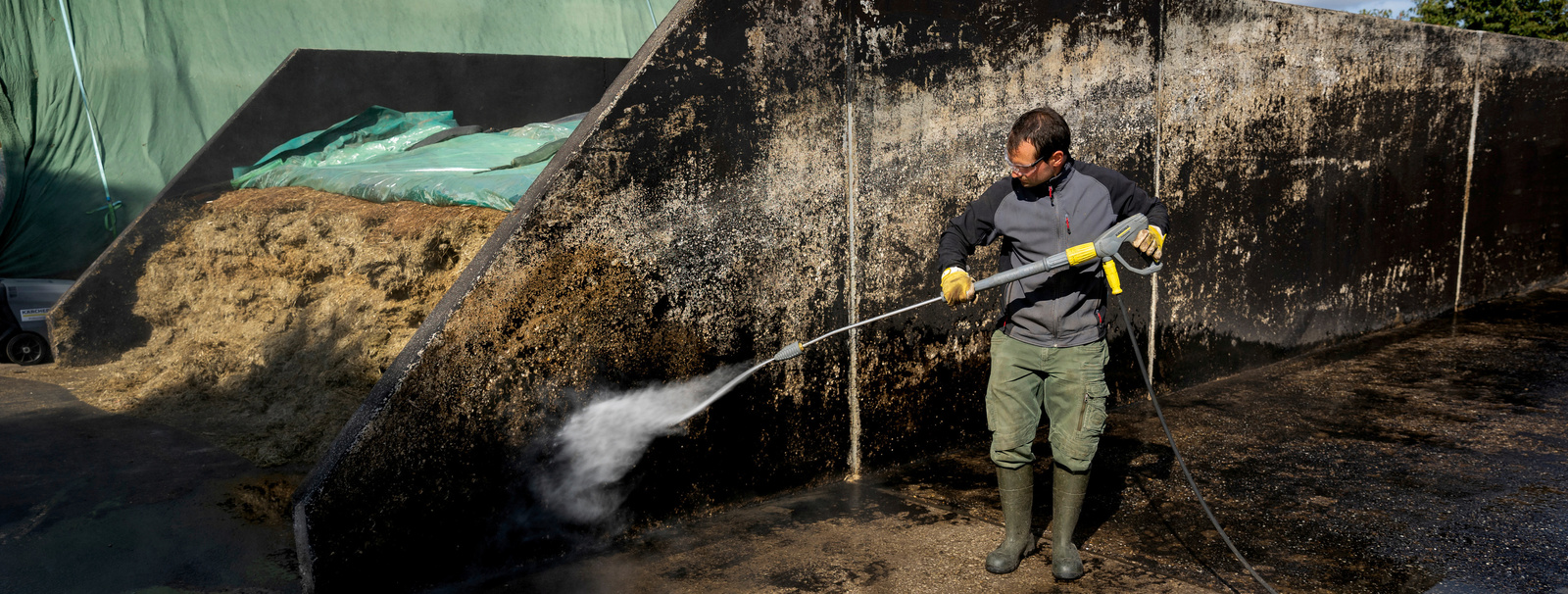
PSA & Co.: Occupational safety when cleaning silos
Personal protective equipment (PPE) is required to protect the user from flying dirt particles or detached pieces of concrete. This generally includes protective suits, gloves, boots, goggles and hearing protection. In order to protect yourself from possibly swirling germs, you should also use full-body protective suits, air filter masks and high, closed boots when cleaning the silo. The dirty water must be disposed of professionally in accordance with the regionally specified, public discharge regulations.
Tipp 1 – Ergonomie:
Ergonomics is also an important issue in agriculture, especially since silo cleaning involves a great deal of physical strain. Ergonomic accessories such as the EASY!Force high-pressure gun, for example, use the recoil force of the high-pressure jet and thus reduce the user's holding power to a minimum.
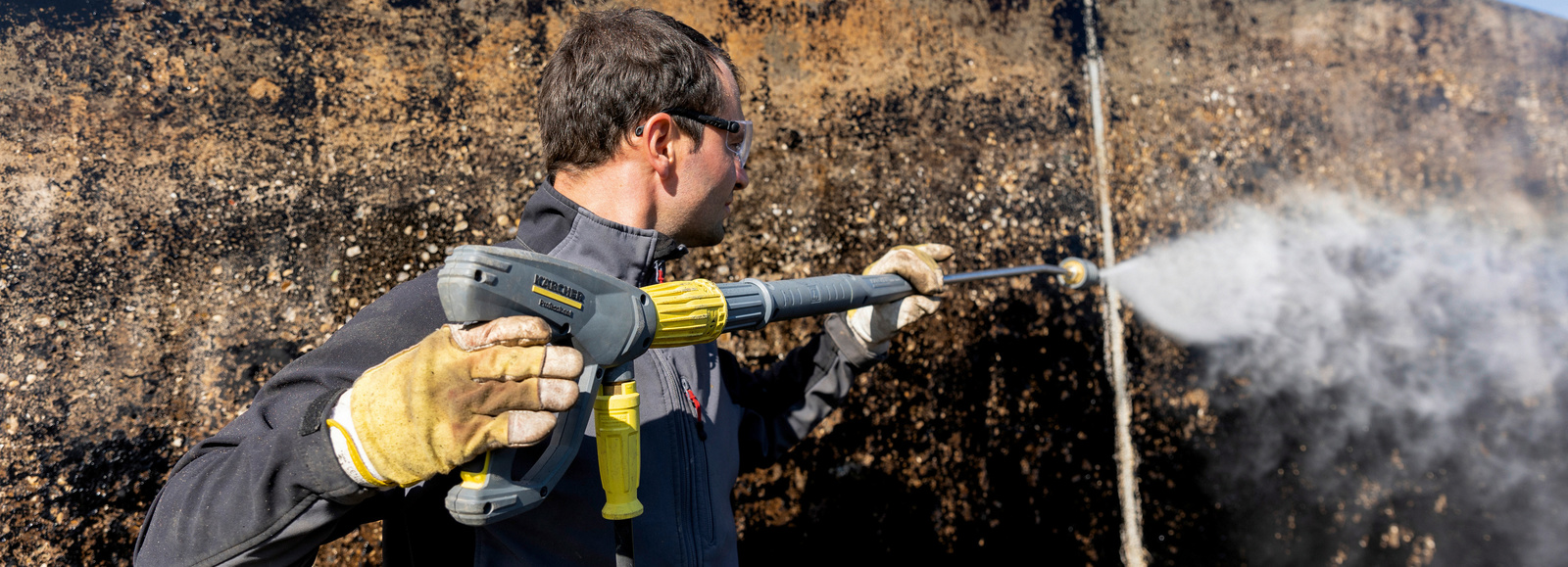
Tip 2 – Cleaning the PE film:
A flat jet nozzle is very suitable for cleaning the PE film that is used to cover the silos. In order not to damage the film, the pressure and water volume should be reduced.
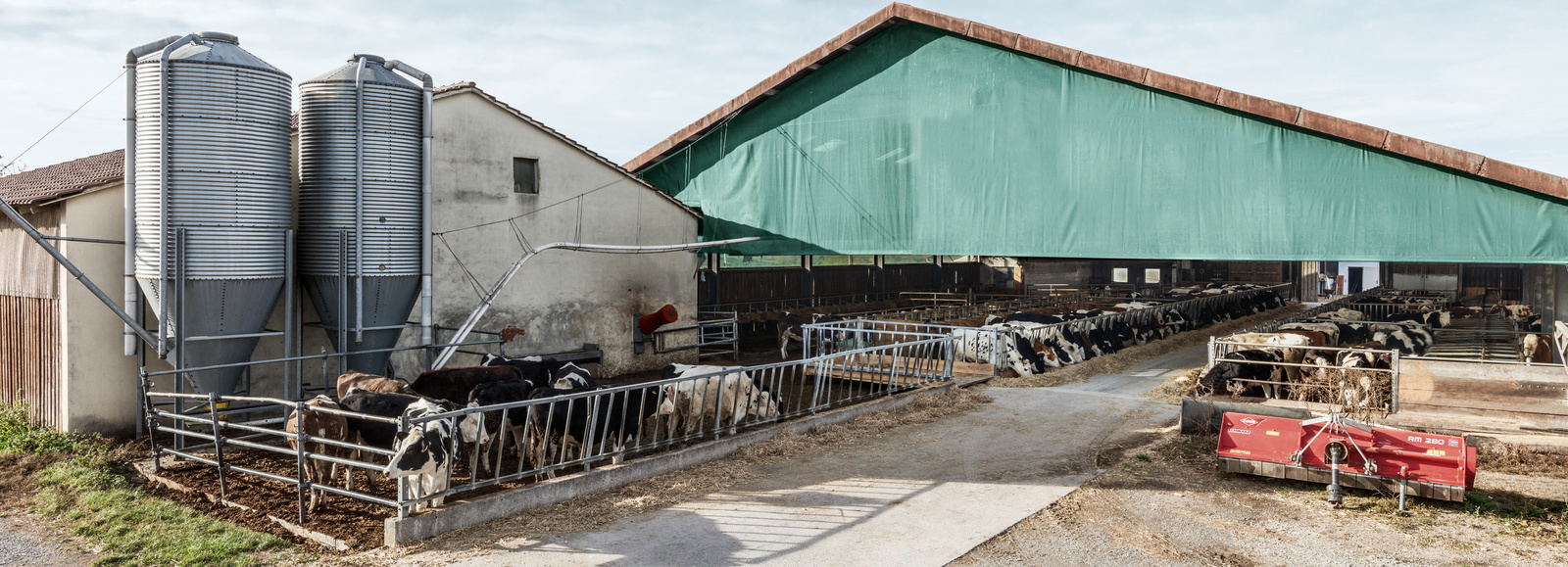
Cleaning tower silos: cleanliness inside and out
Widespread are outdoor silos or tower silos that are built into a three- or four-legged system. The decisive factor for the quality of the stored fodder is that the silos are sealed and that no water can penetrate through seams, service flaps or the fodder removal. Because both moisture coming from outside and the condensation that occurs at high temperatures harbor the risk of deposits forming in the silo. It is therefore important that a thorough silo cleaning takes place after each emptying. Otherwise mold and germs will form in the deposits over time, which can get into the feed and damage animal health. The exterior cleaning includes the walls and the silo hopper for feed removal. Working with a hot water high-pressure cleaner is recommended to effectively remove leftover food, mold and other dirt.
Dry silo cleaning via the inspection hatch
When it comes to cleaning the interior, this is possible via an inspection hatch, which is either embedded in the silo cover or must be installed later as a service hatch. If necessary, dry deposits can be removed via the hatch from the outside with a telescopic rod and a wet/dry vacuum cleaner. Dissolved dirt can also be sucked off via the extraction. Depending on the type of dust to be extracted, class M or H filters may be necessary. Another criterion is explosion protection according to current ATEX specifications, the European directive on explosion protection (Atmosphères Explosibles). This ensures that vacuum cleaners do not pose any danger when handling flammable substances - the protective measures required vary depending on the ATEX zone (20, 21 or 22).
Dust classes and their meaning
- Class L vacuum cleaners are suitable for vacuuming softwood, lime and plaster dust or rubbish. Class L dusts present a moderate risk. No special precautions are required for their disposal.
- Models with class M filters are suitable for extracting dust generated by the following materials: hardwoods, board materials, paint dust particles, ceramics, concrete and brick.
- Class H vacuum cleaners are suitable for picking up large quantities of both safe and hazardous/highly carcinogenic substances such as asbestos dust, lead, carbon, nickel, cobalt, copper, cadmium and mould.
Wet silo cleaning
With a high-pressure cleaner and interior cleaning heads, which are driven by the liquid jet, the silo can also be wet-cleaned on the inside via the inspection hatch in order to remove adhering dirt. The interior cleaning heads rotate through the water flowing through and thus reach every area in the silo. Water throughput, pressure and speed can be adjusted depending on the degree of contamination: For large or particularly dirty containers, a slow rotation speed and a fine spray pattern should be selected; for smaller or less dirty containers, a faster rotation and coarse spray pattern can be used.
For a thorough silo cleaning, it is usually necessary for the user to climb into the container with PPE and a breathing apparatus. As a rule, experts from special companies who have climbing training and the necessary equipment are hired for this. Disinfection follows after cleaning.
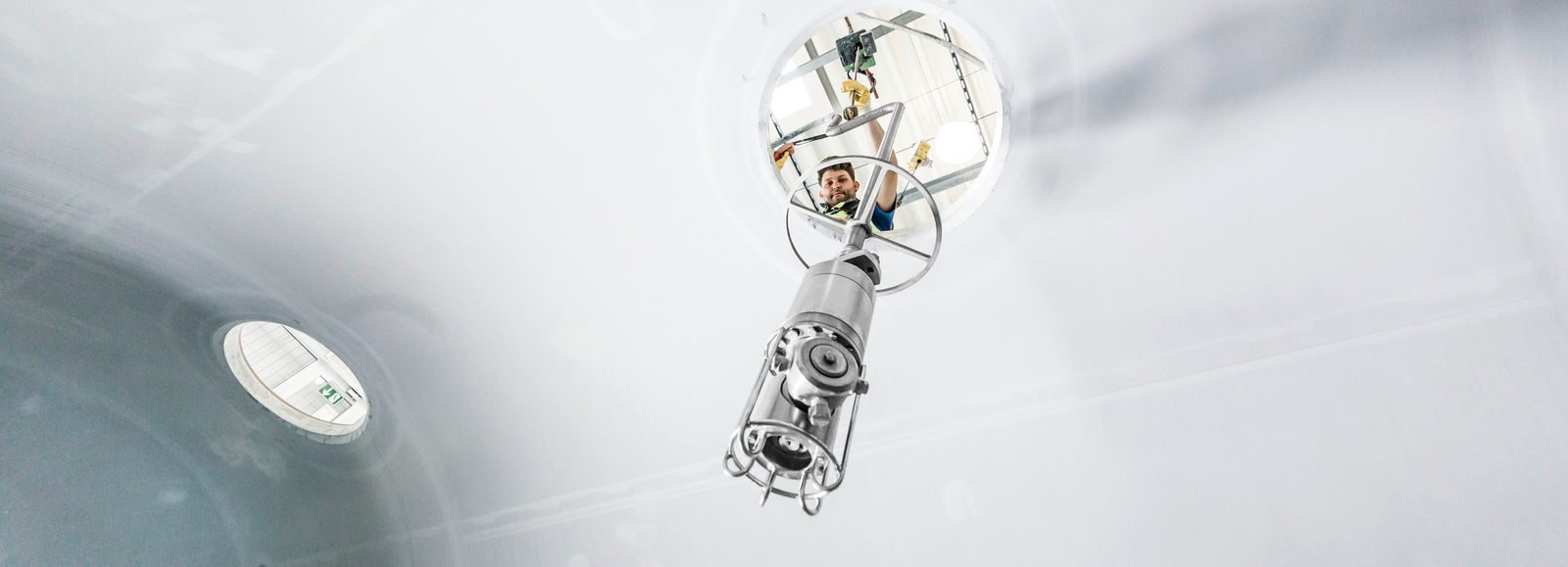
Cleaning silo bags from Trevira: a dry matter
Cleaning indoor silos is relatively easy compared to flat and tower silos. The silo sacks made from Trevira, a stable and air-permeable fabric, hang in a four-legged iron frame. The fine fabric outer skin lets the air out of the bag when the feed is blown in, but the feed dust remains in the Trevirasilo. Once the silo has been emptied, the sack is shaken out and tapped off in order to transport any leftover feed to the bottom. Since the cleaning flaps are usually so small that you can hardly reach in with your hands, a powerful wet/dry vacuum cleaner is a good support in the feed silo to completely remove the old feed residues and dirt during cleaning.
What to do if a Trevirasilo has gotten wet
It is important that Trevirasilos are housed in dry rooms. If they are housed in housings or under a plastic cap, the condensation causes problems. Because the feed absorbs the moisture quickly, which can cause fungal infections that are harmful to the animals. If a Trevira bag has become damp or wet on the inside, shaking it out and vacuuming it is no longer sufficient. In this case, specialist companies should carry out professional silo cleaning, as working with a high-pressure cleaner and air drying does not bring the desired result. In addition, there is always a risk that residual moisture will remain in the sack.
A look at feed production: the cleaning of stationary silos
So that a farmer can be sure that there are no weak points in his feed cycle, he should also attach importance to a hygiene concept including documentation from his feed suppliers. This means that both the large underground tanks and silos for storing feed and the containers that are transported by truck or train must be thoroughly cleaned.
For the large, stationary tanks or silos, there are automated cleaning processes that are integrated into the work processes. A stationary high-pressure supply with an efficient high-pressure pump and a hot water steam generator form the core of the cleaning system. There are also various accessories such as a self-rotating cleaning head and a system control tailored to the needs. If necessary, acidic or alkaline cleaning agents can be used to increase the cleaning performance.
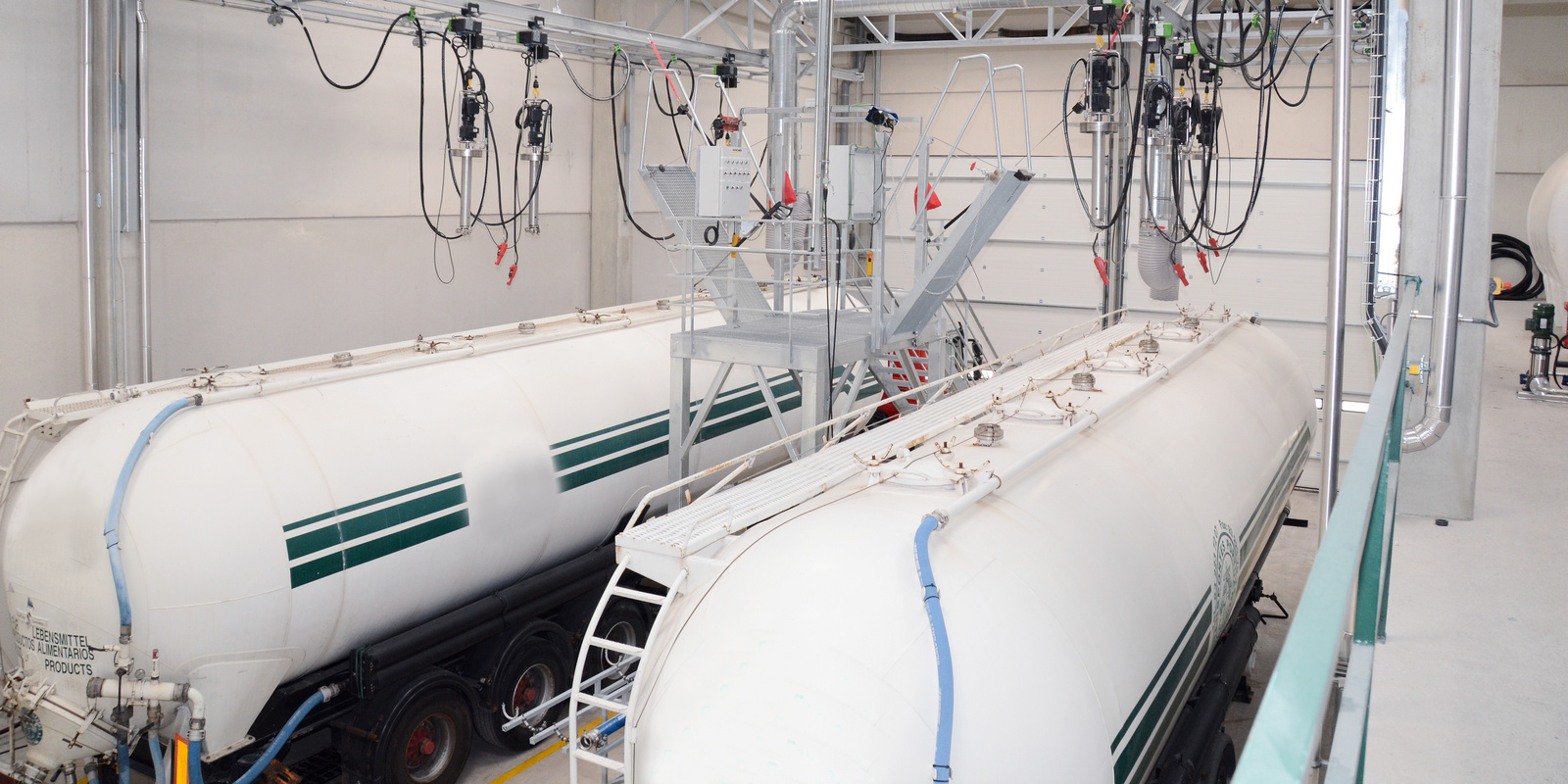
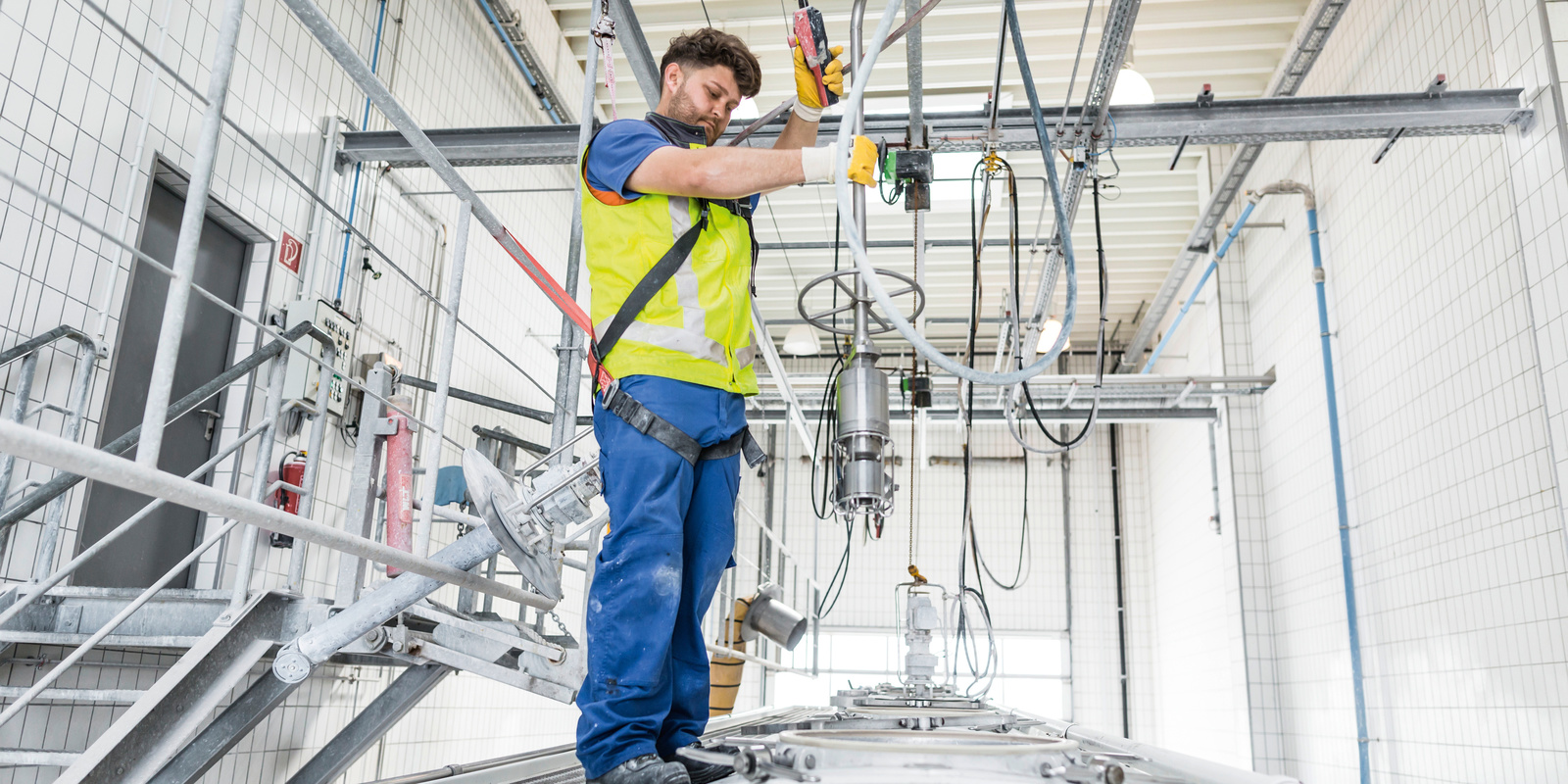
Cleaning of mobile containers
Since mid-2015, the EFTCO standard SQAS (Safety and Quality Assessment System) has regulated the cleaning of mobile tanks, containers and silos. The background is the increasing safety and quality requirements, which require proof of a continuous cleaning chain from production to storage to transport. For the best possible tank and silo cleaning, the right interaction of mechanics, temperature, cleaning agent and time is decisive. Equipped with a heating system, high-pressure pumps for cleaning the inside and a high-pressure pump for the outside, spray heads, a high-pressure heat exchanger and a drying unit, a tank cleaning station ensures fast, efficient and standard-compliant cleaning of mobile containers.
EXCURSION: Cleaning liquid manure tanks - cleaning in the middle of dirt
Slurry silos or slurry pits are usually embedded in the ground, as a prefabricated concrete component or cast in concrete on site. After it has been completely emptied, the liquid manure tank must be cleaned. The user should wear a breathing apparatus and safety belts due to the danger from residual fumes.
- First, the silo should be pre-watered.
- A bucket is then usually lowered into the silo using a telescopic loader, into which the user can shovel coarse dirt.
- Thorough cleaning is then carried out with the cold water high-pressure cleaner with a high flushing capacity, whereby a dirty water pump is required for suction for the waste water. After the silo has been cleaned, the dirty water must be properly disposed of in accordance with the regionally specified, public discharge regulations.















